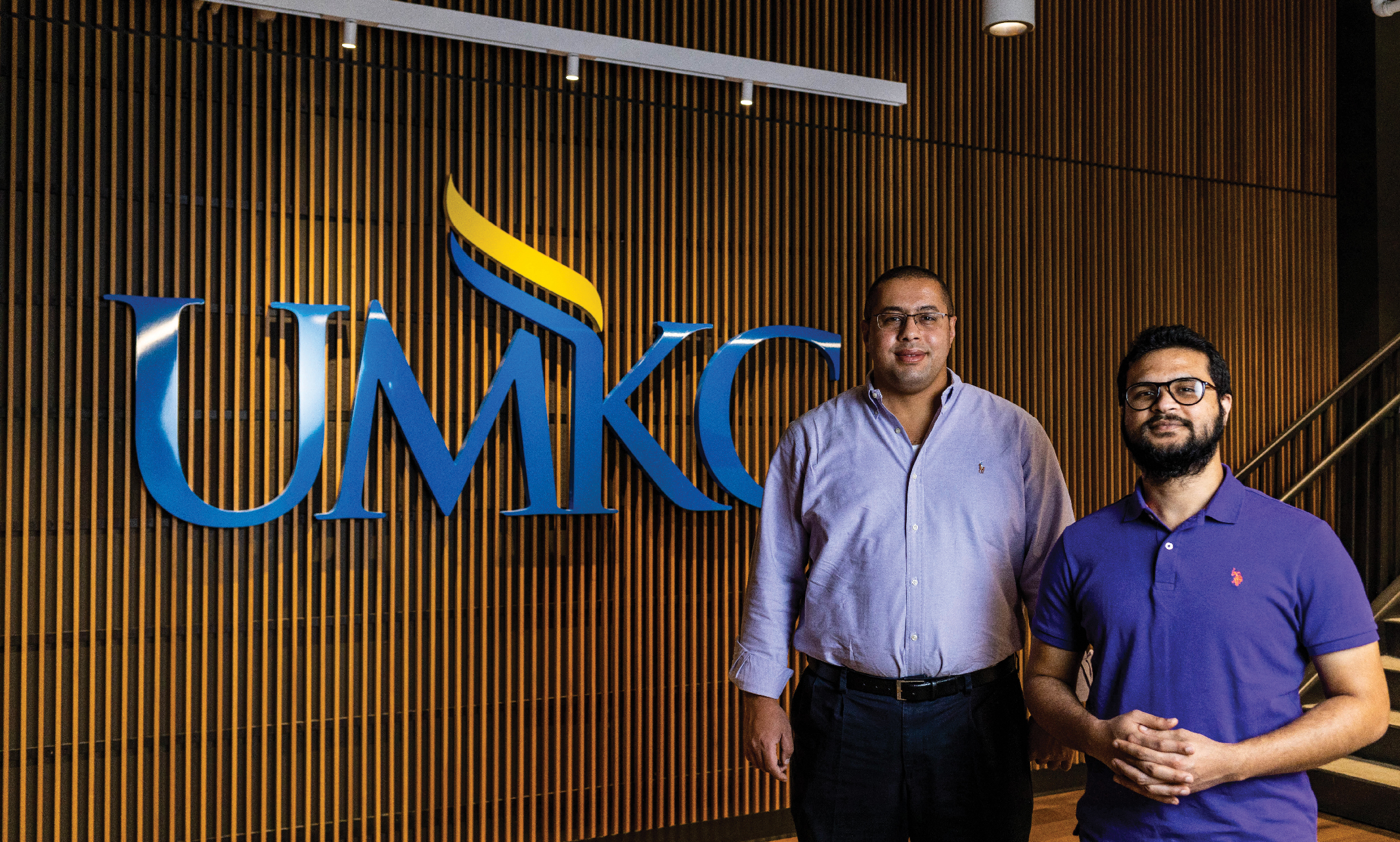艾哈迈德·哈桑博士长期以来一直着迷于电磁学,以及电脉冲如何影响最小的粒子,特别是那些形状复杂的粒子。 在Robert W. Plaster Free Enterprise and 研究 Center的高级电力、电子和电磁学实验室里,这位副教授专注于如何使用高功率电脉冲治疗癌细胞。
一段时间以来,科学家们一直在探索利用电脉冲向生物细胞输送药物和基因疗法。 但是,大多数研究都是在二维领域中观察细胞,哈桑则更进一步。
“At 威尼斯人娱乐城, we are one of the first groups to study how the three-dimensional shape of actual cells, grown in realistic 3D environments, affects their electrical response,” Hassan says. “It’s only by looking at the full 3D structure that you can predict how the cell will behave when it’s excited by an electrical stimulus.”
通过他们的研究,Hassan和他的研究生研究助理Somen Baidya已经证明,细胞的外部形状在其对电刺激的反应中起着重要作用。 在美国国家标准与技术研究院(NIST)的帮助下,他们的科学家已经能够确定和重建细胞的精确3D形状,哈桑和拜迪亚现在有数千种细胞形状可以研究,包括癌细胞。
精确到万亿分之一度
有了一组计算机来创建计算模型和模拟,哈桑正在使用多种计算技术来计算这些复杂的三维癌细胞对电脉冲的反应。
电穿孔是一种在细胞上施加电场以增加细胞膜通透性的技术。 这使得治疗药物甚至DNA等化学物质可以很容易地插入细胞。 该技术具有非侵入性和对非癌细胞没有毒性,以及与其他治疗方法联合使用的可能性,因此与其他癌症治疗方法相比具有潜在的优势。 电穿孔技术的选择性也使其比其他无法区分健康细胞和癌细胞的技术更安全。
“如果你想杀死癌细胞,那么你就需要施加足够强的电刺激来完全破坏细胞膜。 We’re trying to figure out the optimum pulse that will give us the correct response." —Ahmed Hassan, Ph.D.
Variations in the rate of supraelectroporation used to pierce the cell membrane and penetrate the cell’s internal organelles can guide the selective targeting of desired cells with specific shapes. The current goal, Hassan says, is to determine how to calculate — with a high degree of accuracy and efficiency — the necessary voltage and precise location of these electrical pulses on the cell’s membrane to achieve the desired effect.
Electrical pulses are delivered at very high amplitudes for extremely short durations of time — from nanoseconds, which are one-billionth of a second, to picoseconds, which are one-trillionth of a second. 在某些情况下,目标是在细胞膜上制造一个小洞,大到足以在不伤害细胞的情况下将物质输送到细胞内。
“If the holes become too large, the cells might die,” Hassan says. “In some cases, that’s desired. 如果你想杀死癌细胞,那么你需要施加足够强的电刺激来完全破坏细胞膜。 We’re trying to figure out the optimum pulse that will give us the correct response.”
一旦计算技术被开发出来,下一步将是开发一个机器学习(ML)平台,该平台使用细胞信息来预测精确的激发特性,以实现对细胞的正确影响。
哈桑说,最终,新的石膏中心电力实验室将使他有能力开发一种新颖的、可调谐的高压脉冲发生器,这种脉冲发生器可以产生ML平台预测所需的所需电涌。 它将被设计成产生必要的纳秒或皮秒持续时间的短脉冲,具有针对每个细胞形状优化的高峰值振幅。
从医学到月球
一旦开发成功,这种ML技术可用于治疗其他类型的细胞,例如,分离、治疗或修饰免疫细胞。 此外,不同的电信号可以用来选择性地移动和分离特定的细胞。
“It’s like applying a magnet to the cell. That will start attracting the cell differently based on its shape,” he says.
哈桑目前正致力于项目的前两个方面,以获得初步数据,然后致力于筹集资金,开始建造硬件。
“We’ve been working on this for three years,” he says. “An optimistic timeframe is that we’re halfway there to finishing the engineering aspects before we can take it to the medical researchers and ask them to help us with the actual biological tests.”
哈桑自2015年以来一直是威尼斯人娱乐城教职员工,担任多学科多尺度电磁学实验室主任。 在来到威尼斯人娱乐城之前,他作为NIST的博士后研究员开始研究形状极其复杂的纳米结构。 在那里,他建立了一个大型计算代码库,研究它们对电磁刺激的反应。
“When I came to 威尼斯人娱乐城, I was using this library of computer codes that I had developed as an electrical engineer to study complex shapes with a wide range of applications,” Hassan says. “One application was to study biological cells with complex shapes.”
另一个是研究来自月球的沙子和岩石颗粒的电学特性。 哈桑与他在NIST的合作者合作,能够获得阿波罗11号登月任务期间获得的沙粒的三维形状。
“We’re trying to calculate the electrical response of those sand particles as another exciting application of using electromagnetic radiation to understand the physics of complex shaped particles,” he says.

